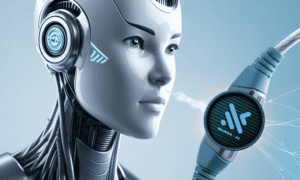Introduction
In an era where technological advancements shape the landscape of various industries, automotive technology stands out as a frontier for innovation. One of the critical aspects that has garnered considerable attention is road safety. With an alarming increase in road accidents and fatalities, the integration of Artificial Intelligence (AI) in automotive technology emerges as a beacon of hope. This article explores how AI is playing a pivotal role in enhancing safety on the roads.
The Current State of Road Safety
Before delving into the impact of AI, it is essential to understand the existing challenges in road safety. Despite significant strides in vehicle design and traffic regulations, road accidents continue to be a global concern. Human error, a primary contributor to accidents, underscores the need for a paradigm shift in how we approach road safety. This is where AI steps in, offering solutions that could revolutionize the way we navigate our roads.
The Rise of AI in Automotive Technology
Artificial Intelligence has transcended from being a futuristic concept to a tangible force reshaping the automotive industry. The integration of AI in vehicles is not limited to self-driving cars; it extends to a spectrum of safety features designed to mitigate risks and enhance overall road safety.
Collision Avoidance Systems
AI-driven collision avoidance systems have emerged as a game-changer in preventing accidents. These systems utilize sensors and cameras to monitor the vehicle’s surroundings, identifying potential collision risks. In critical situations, the AI system can autonomously apply brakes or steer the vehicle away from danger, acting faster than human reflexes. This proactive approach significantly reduces the likelihood of accidents, especially in scenarios where human response time may fall short.
Adaptive Cruise Control
Traditional cruise control systems maintain a constant speed set by the driver, requiring manual adjustments in response to changing traffic conditions. AI-powered adaptive cruise control takes this a step further by using sensors to monitor the speed and proximity of surrounding vehicles. The system can automatically adjust the speed, maintaining a safe distance from the vehicle ahead. This not only enhances safety but also improves traffic flow and reduces the risk of rear-end collisions.
Lane Departure Warning and Assistance
Fatigue and distraction contribute to a significant number of accidents caused by unintentional lane departures. AI-driven lane departure warning systems alert drivers when they unintentionally drift out of their lane. Advanced versions of this technology go beyond warnings, providing lane-keeping assistance by gently steering the vehicle back into the correct lane. These features contribute to preventing accidents caused by momentary lapses in attention, offering an added layer of safety.
Predictive Maintenance
Ensuring the safety of vehicles on the road goes beyond immediate accident prevention. AI is making strides in predictive maintenance, where it can analyze data from various sensors to anticipate potential mechanical issues. By identifying and addressing maintenance needs before they escalate, AI contributes to reducing the likelihood of on-road breakdowns that could lead to accidents.
The Human Touch in AI Integration
While AI brings a plethora of benefits to road safety, it is essential to emphasize the symbiotic relationship between technology and human involvement. The goal is not to replace human drivers but to augment their capabilities and create a safer driving environment. The seamless integration of AI with human intuition and decision-making is paramount in achieving optimal results.
Challenges and Considerations
Despite the promise of AI in enhancing road safety, there are challenges and considerations that must be addressed. Cybersecurity concerns, ethical dilemmas surrounding decision-making algorithms, and the need for standardized regulations are among the issues that warrant careful consideration. Striking the right balance between innovation and accountability is crucial for the successful integration of AI in automotive technology.
The Future of AI in Road Safety
As technology continues to evolve, the future of AI in road safety holds immense potential. Advancements in machine learning and predictive analytics will likely lead to even more sophisticated safety features. Additionally, the widespread adoption of connected vehicle technology and communication between vehicles (V2V) could further amplify the effectiveness of AI in preventing accidents and optimizing traffic flow.
Conclusion
The integration of AI in automotive technology marks a significant leap forward in enhancing safety on the roads. From collision avoidance systems to adaptive cruise control and predictive maintenance, AI-driven features are reshaping the landscape of road safety. It is imperative to approach this technological shift with a holistic perspective, acknowledging the need for continued collaboration between humans and AI. As we navigate the road ahead, the transformative role of AI in automotive technology is poised to make our journeys safer and more secure.



































